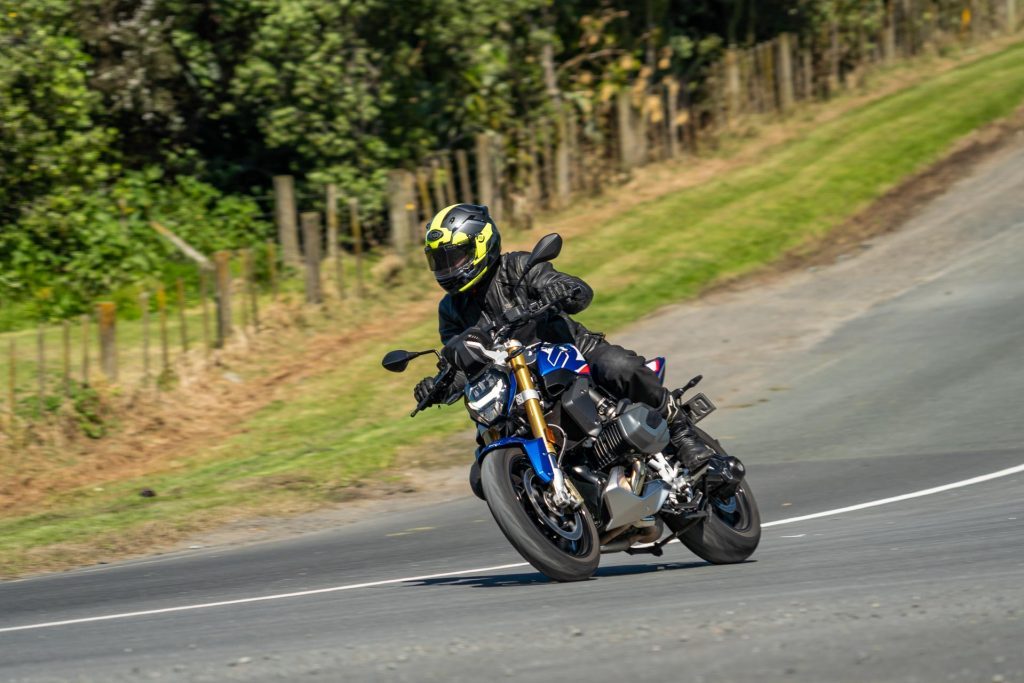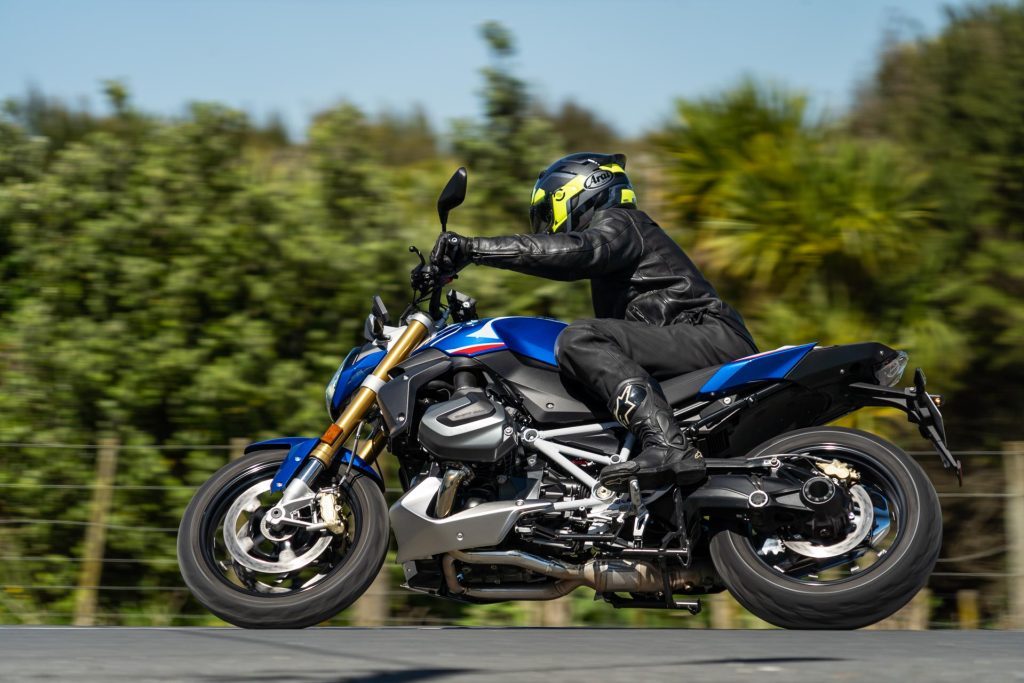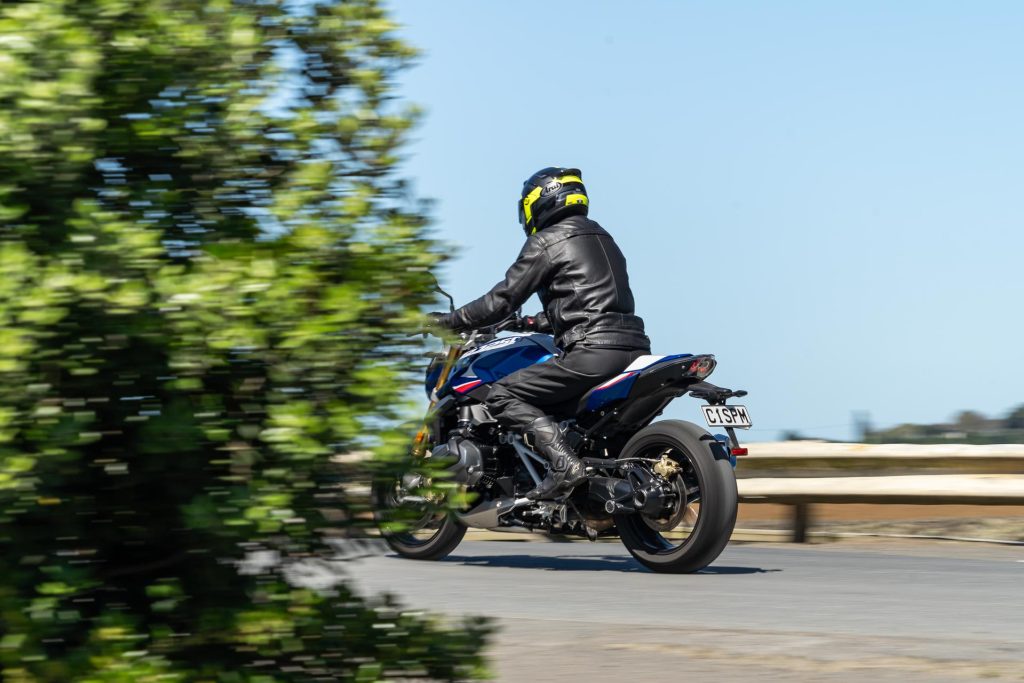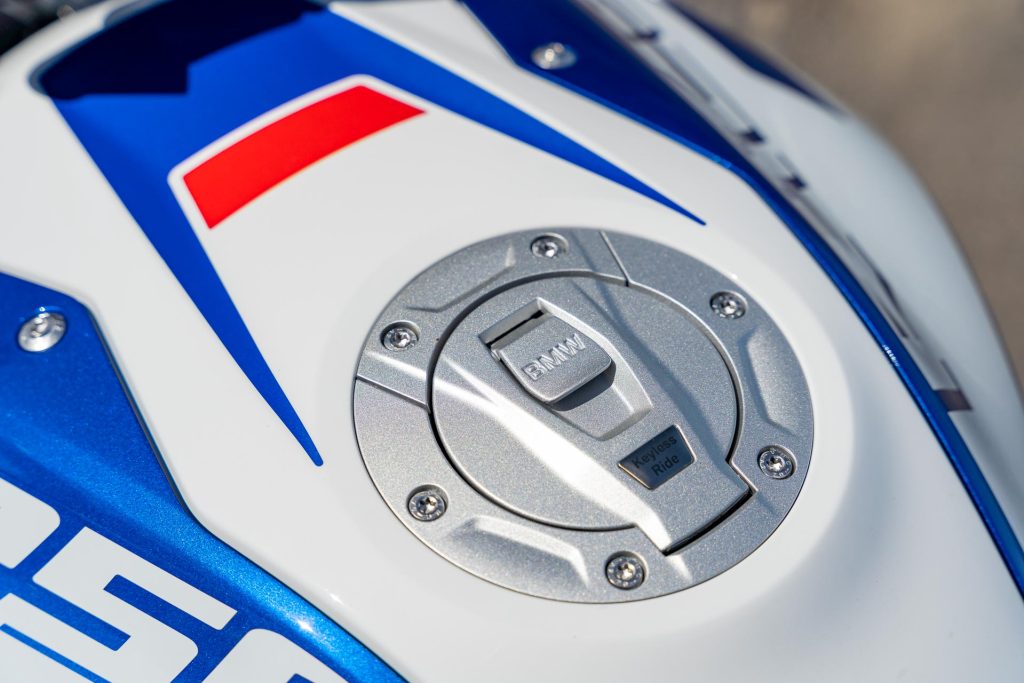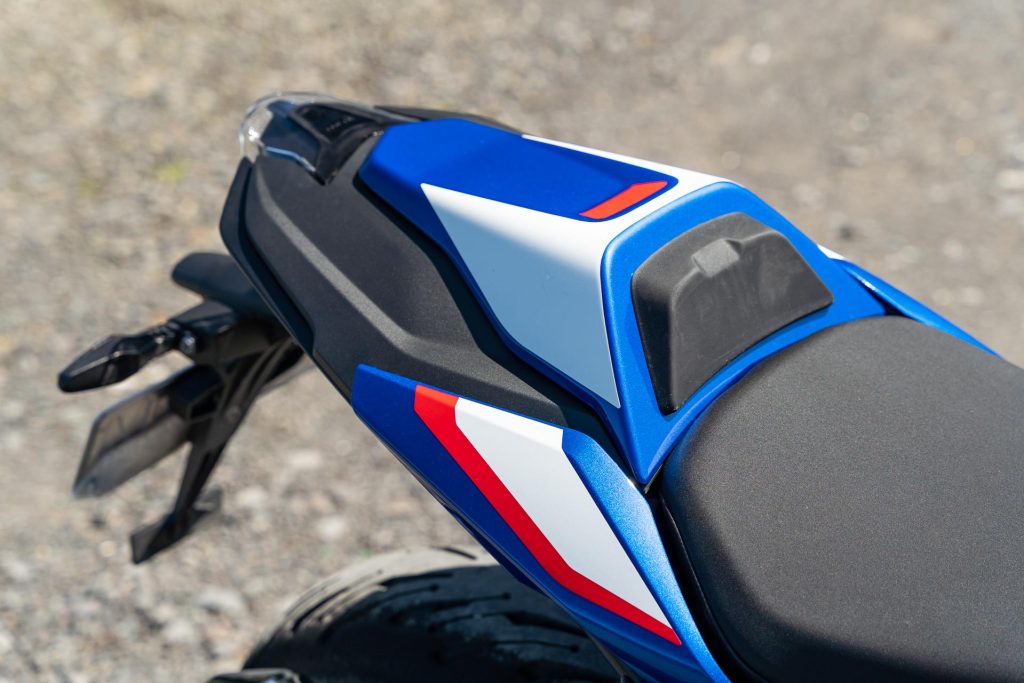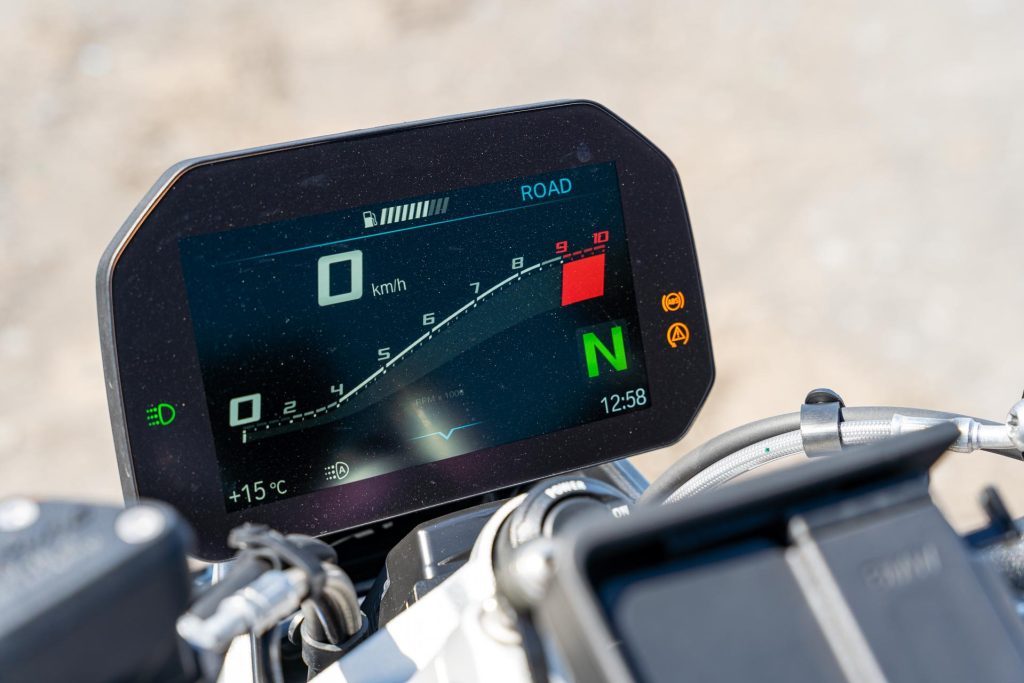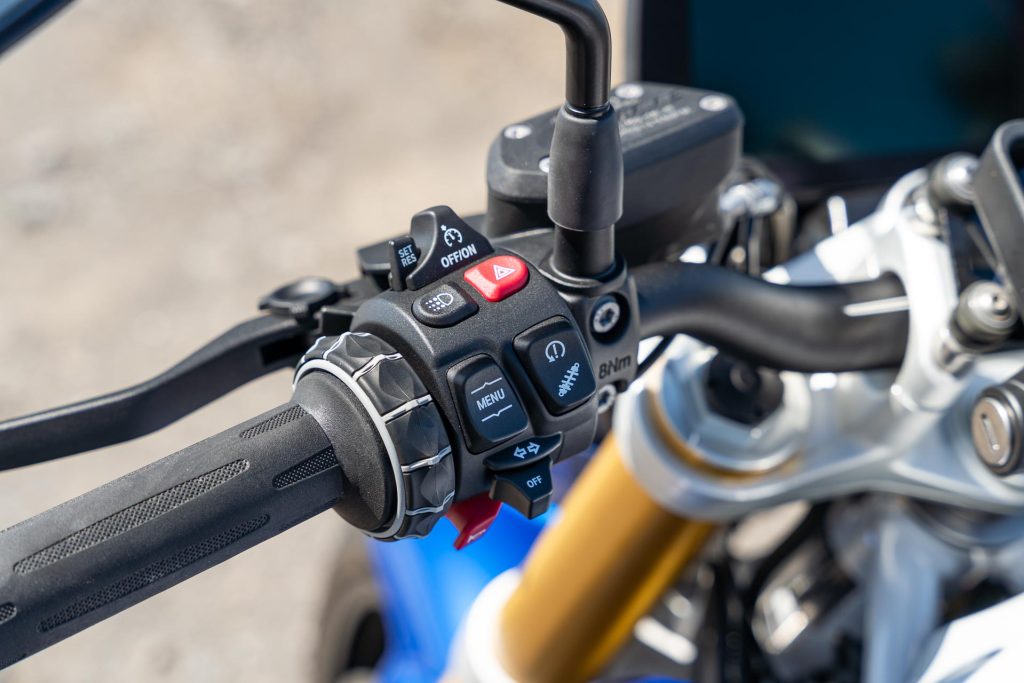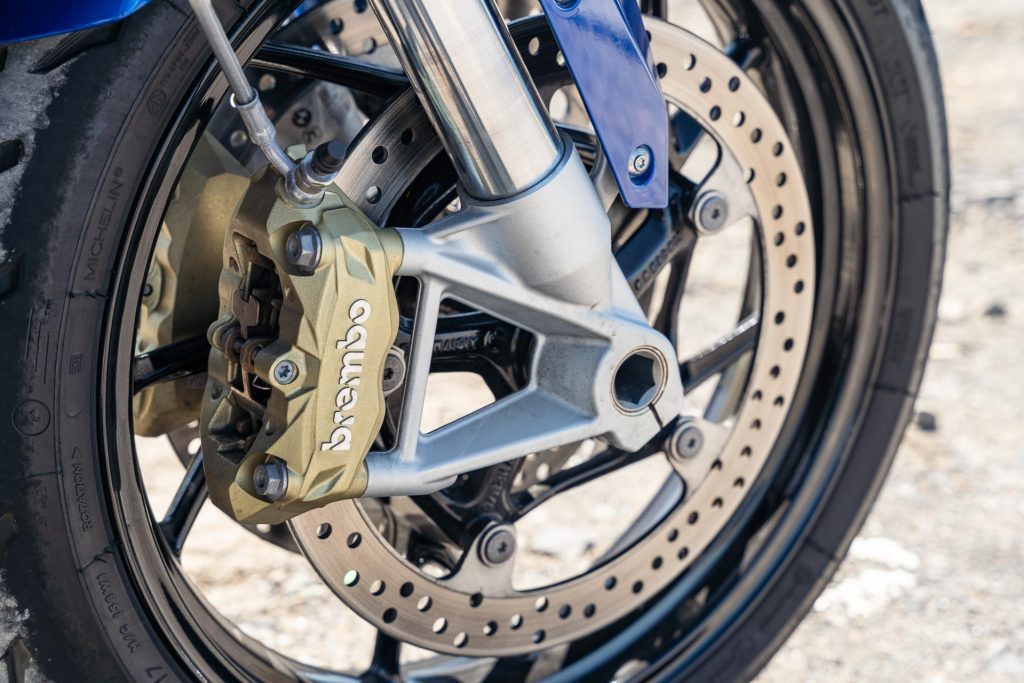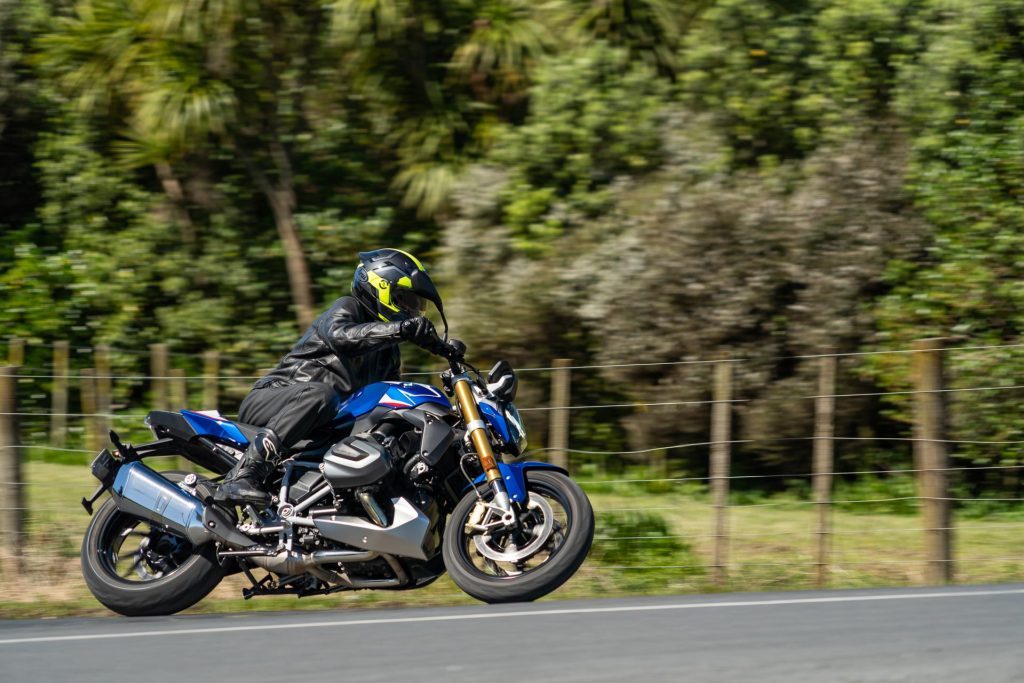2023 BMW R 1250 R Roadster review
Most bikes have inline fours or large vee twins. BMW sticks with horizontally opposed or boxer twins, like the R 1250 R.

Most big bikes have inline fours or large vee twins. Only BMW sticks with horizontally opposed or boxer twins, as they have for 100 years, like the latest R 1250 R.
BMW kicked off with boxer twin power for their motorcycles a century ago and here we are riding the R 1250 R, a standard bike with the same engine layout. There must be something about this configuration for the firm to retain its services.
The latest edition has variable valve timing which BMW labels Shiftcam.
And that’s a particularly apt description because when you’re accelerating and head past 4500rpm the engine tone changes audibly, as if there’s more air flowing into the heads, as though it has shifted from one cam to another…which it has.
And at this point it really starts to fire. This may not be the most potent big bike for outright power – some of the superbikes make over 200hp these days versus 136hp (100kW) here – but its torque of 142Nm is more than what the fastest bikes make, so it is an easygoing ride.
Moreover, there’s 110Nm of torque available from 2000rpm, and over 120Nm at 3500rpm. That’s exactly how it feels; Herculean strong down low.
And as if to underline all this, the bike is faster 0-100 when starting out in second gear compared with first. How gutsy is that?
We couldn’t better 3.6sec upshifting from first to second but in second alone achieved a best of 3.42sec.
It is also close to being superbike quick on the overtake, 80-120 taking just 1.49sec (under 42m). That’s cranking.
Quietly quick
Not that longitudinal acceleration is its best trick because what the R 1250 R excels at is being sneaky quick, ghosting its way from A to B.
While it isn’t happy below 2000rpm once above that (60km/h) it starts to feel ballsy. It’s doing 100km/h at 3400rpm where there is virtually no vibration, almost unheard of in bikedom and for the most part the mirrors are like a lake on a zero-wind day.
Come overtaking time and you merely wind on in top gear, no downshift necessary.
If you do though, once you’ve hit 4500rpm things start to get really interesting. Not that you visit that much, such is the generous midrange torque.
With tall gearing you’re flying along anyway, well over the odds using 4000rpm in top gear (120km/h). And that should keep fuel use down.
When we refilled the 18L tank the DTE figure was reading 350km so this is for sure ready to tour (just over 5L/100km). You’d probably want to add an accessory screen as this bike has no weather protection.
Ride and handling sorted
The reason this is sneaky quick is not just because of tall gearing and almost zero engine vibes.
It handles and rides impeccably and although you do pay for the privilege – it is precisely $7k more expensive than when we last rode the BMW R 1200 R in 2017 – it comes laden with gear as standard, including keyless ride, heated grips, TPM, cruise control, a centre stand, prep for luggage and GPS, and electronic suspension.
The special handling attributes are due to the low C of G and mass centralisation of the flat twin, the good standard rubber (Michelin Pilot Road), the stiff frame and the electronic suspension.
We tried it in Dynamic and Road, but stuck to the latter because it offered a better mix of comfort and control on back roads.
But we kept Dynamic engine activated because it’s a bit gutsier. You can go Road or Eco, the latter new for 2023. There’s lean sensitive ABS and TC too, both added this year.
So yes, lots of ride comfort, though you’re exposed to the wind. If you’re serious about distance, consider the BMW R 1250 RS, for it’s only $1500 more ($34,990 vs $33,490) and looks better finished with the half fairing.
The screen is also adjustable and the bars are more high rise, so it’s less of a lean forward riding position in town.
Despite the R 1250 R being almost 240kg wet, and you notice that when wheeling the bike around, once underway it seems to shed weight dynamically.
Out of town, you’d not credit how effortlessly this turns in and holds a line. It’s likely the reason why the BMW R 1250 GS is so popular.
Only with proper street tyres, the R 1250 R steps up another level on road.
Good stoppers and all
Brakes are wizard too. For the most part they’re not really needed because of dynamic engine brake control. Back off the throttle and this slows the bike like gentle regen in an EV.
The brakes are just there for when a bit more retardation is required. They’re good too, though faded during performance testing. But when used in anger these haul the bike down reassuringly, our best stop measuring 39m.
A couple of other points. The bars are almost flat so there’s a wee stretch to them when riding in urban areas.
Out of town the forward lean counteracts the wind blast nicely. If you optioned in a screen you might want to change the handlebars.
We didn’t fiddle too much with the iRide system because you don’t need to on the whole. TC can be turned off by pushing and holding a button, suspension can be changed using another control, and ditto for ride modes and setting cruise speed.
There’s otherwise little to do with this bike, other than enjoy riding it. Shaft drive means no driveline maintenance, indicators are self cancelling, levers are span adjustable, and you can pair your phone for navigation. It even has hill start control.
The R Series received our Bike of the Year in 2016. This evolved variant with Shiftcam is every bit as sophisticated and sorted as it was then, albeit for a little extra outlay.
Expect an R 1300 R at some point, taking in the extra power and weight reductions pioneered on the new GS model.
Model
BMW R 1250 R Roadster
Price
$33,490
Format
Air/Liquid-cooled / Fuel Injected / F2
Engine Capacity
1254cc
Max Power
100 kW @ 7750 rpm
Max Torque
143 Nm @ 6250 rpm
Cylinder Head
DOHC / 8v
Gearbox
6-speed
Drivetrain
Shaft drive
Front Suspension
45mm USD forks, no adjustment
Rear Suspension
Monoshock, preload and rebound adjustable
Front Brakes
Four-piston calipers, 276mm disc
Rear Brakes
Twin-piston calipers, 276mm disc
Safety Systems
ABS, TC
Tyre Size
F – 120/70ZR17 / R – 180/55ZR17
Tyres
Metzler Roadtec Z8
Wheelbase
1515mm
Seat Height
820mm
Rake/Trail
27.7 degrees / 126mm
Fuel Capacity
18 L
Measured Weight
239 kg
Weight Distribution
F – 116 kg / R – 123 kg
This story first appeared in the February 2024 issue of NZ Autocar magazine.
View listings on Trade Me Motors: BMW Roadster
This article was originally published on autocar.co.nzAlso consider
